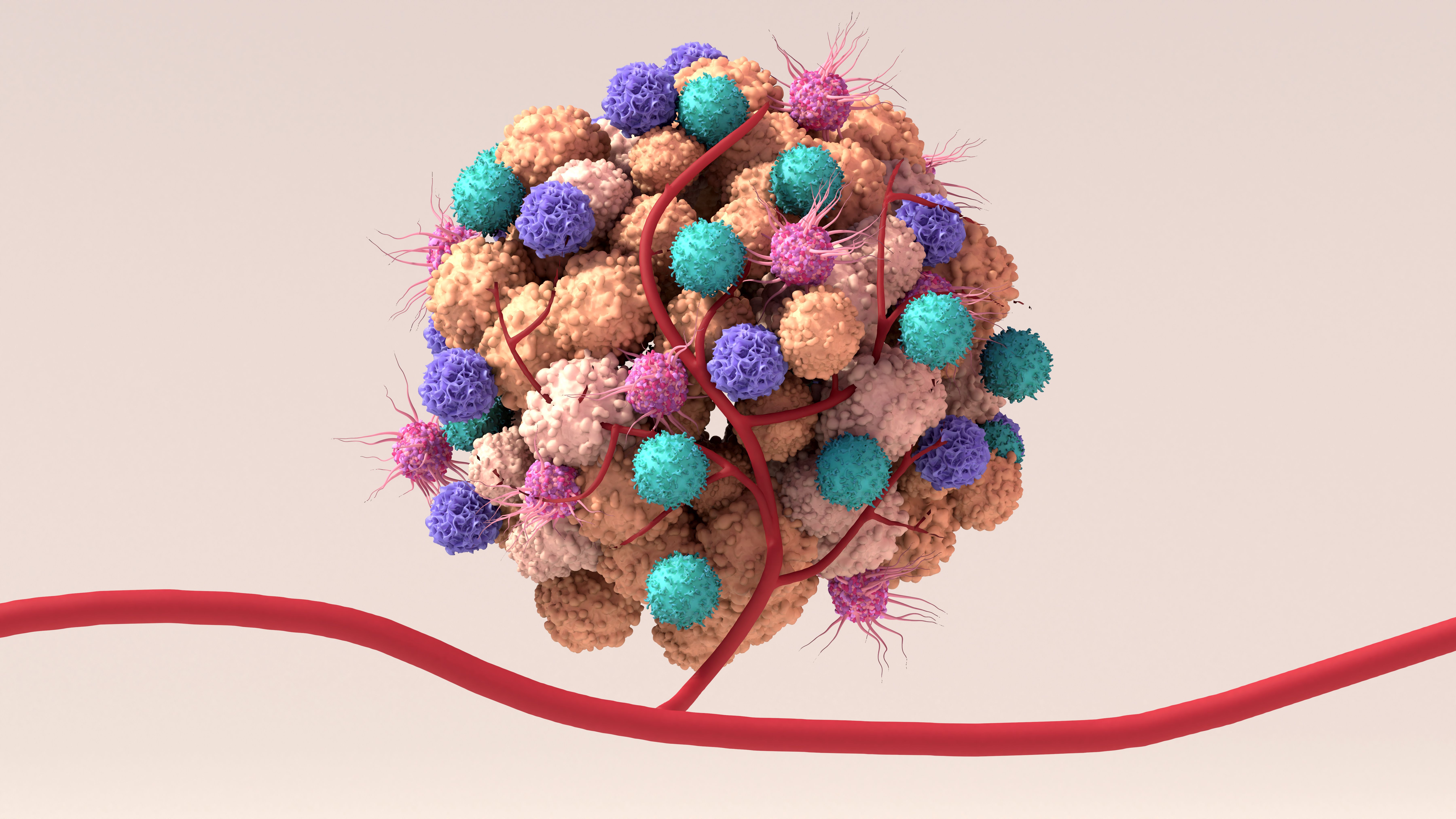Radioligand Therapy Found to Improve Survival, Disease Progression in Advanced GEP-NETs
Data presented at the 2024 American Society of Clinical Oncology Gastrointestinal Cancers Symposium show first-line Lutathera plus long-acting release octreotide lowered the risk of disease progression or death by 72% in patients with advanced gastroenteropancreatic neuroendocrine tumors.
Image credit: Design Cells | stock.adobe.com

Phase III trial data for Novartis’ Lutathera (INN: lutetium [177Lu] oxodotreotide/USAN: lutetium Lu 177 dotatate) show first-line therapy with the drug plus long-acting release (LAR) octreotide lowered the risk of disease progression or death by 72% in patients with somatostatin receptor-positive (SSTR+) well-differentiated grade 2/3 advanced gastroenteropancreatic neuroendocrine tumors (GEP-NETs) compared with high-dose octreotide LAR monotherapy.
These data from the NETTER-2 (NCT03972488) trial, presented at the 2024 American Society of Clinical Oncology Gastrointestinal Cancers Symposium, demonstrate the ability of radioligand therapy (RLT) to deliver radiation to target cells anywhere throughout the body of patients with advanced cancers, according to Novartis.
“This is the first positive Phase III trial of a [RLT] in the first-line setting, and the overall efficacy and safety results are amongst the most clinically relevant observed to date in this kind of advanced cancer, addressing a significant unmet need for patients with newly diagnosed advanced GEP-NETs,” said Global Head of Oncology Development at Novartis, Jeff Legos, in a press release. “The positive results are a significant advancement and further reaffirm our strategy to research and develop radioligand therapies in earlier lines of treatment or stages of disease to improve outcomes for patients.”
Lutathera has been approved by the FDA for adults with SSTR+ GEP-NETs, including GEP-NETs in the foregut, midgut, and hindgut. The drug has also been approved in Europe for unresectable or metastatic, progressive, well-differentiated (G1 and G2) SSTR+ GEP-NETs in adults and in Japan for SSTR+ NETs.
The open-label, multi-center, randomized, comparator-controlled NETTER-2 trial evaluated whether Lutathera with octreotide LAR administered as a first-line treatment was able to prolong progression-free survival (PFS) in patients with high-proliferation rate tumors (G2 and G3) vs. treatment with high-dose 60 mg long-acting octreotide. Eligibility criteria included a diagnosis of SSTR+ advanced GEP-NETs within six months prior to enrollment.
The data show that median PFS was 22.8 months (95% CI: 19.4 -not estimable) with Lutathera plus octreotide LAR compared with 8.5 months (95% CI: 7.7-13.8) with high-dose octreotide LAR alone. Objective response rate was 43% (95% CI: 35.0-51.3) with Lutathera plus octreotide LAR compared with 9.3% (95% CI: 3.8-18.3) with high-dose octreotide LAR alone.
In terms of safety, there were no new or unexpected findings reported in the study, with data remaining consistent with Lutathera’s previously established safety profile. Of patients in the trial administered Lutathera, 88% received all four cycles of treatment. The most commonly reported all-grade adverse events (AEs) in the Lutathera cohort (≥20%) compared with the high-dose octreotide LAR along group were nausea (27.2% vs 17.8%), diarrhea (25.9% vs 34.2%), and abdominal pain (17.7% vs 27.4%), with the most common grade ≥3 AE (>5%) being reduced lymphocyte count (5.4% vs 0%).
NETTER-2 is ongoing to further analyze the trial’s secondary endpoints, which include overall survival and long-term safety.
“These positive results for Lutathera are practice-changing and offer new first-line treatment data for patients who have a significant unmet need. This study confirms the clinical benefit of first-line radioligand therapy for newly diagnosed patients living with these types of advanced GEP-NETs,” Simron Singh, MD, MPH, FRCPC, associate professor of Medicine at the University of Toronto and cofounder of the Susan Leslie Clinic for Neuroendocrine Tumours at the Odette Cancer Centre, Sunnybrook Health Sciences Centre, said in a press release. “These findings should instill confidence among physicians in using Lutathera as a first-line treatment for patients with this life-threatening type of cancer.”
Reference
Novartis Lutathera® significantly reduced risk of disease progression or death by 72% as first-line treatment for patients with advanced gastroenteropancreatic neuroendocrine tumors. Novartis. News release. January 19, 2024. Accessed January 19, 2024.
Protecting Temperature-Sensitive Pharmaceuticals, Without Unnecessary Plastic Waste
March 24th 2025Advances in the life sciences are driving a significant increase in the number of temperature-sensitive pharmaceuticals. The packaging industry is meeting the moment with advances of its own, including high-performance, environmentally-friendly materials that allow life science companies meet stringent thermal requirements and ambitious CO2e reduction goals. In this episode, TemperPack’s CEO Peter Wells shares insights from working with life sciences to move to certified biobased, home compostable, and curbside recyclable shipping solutions.